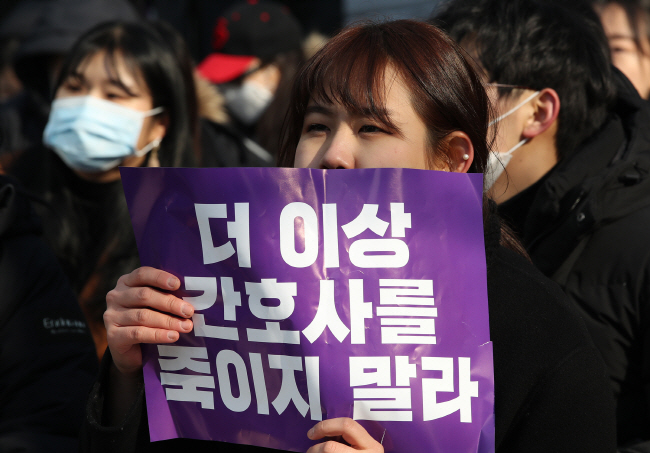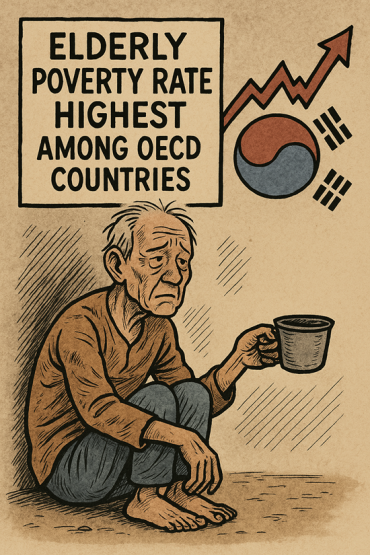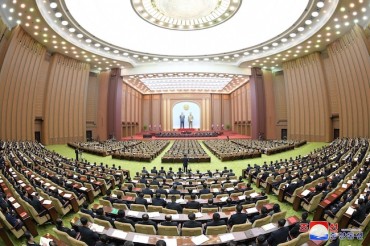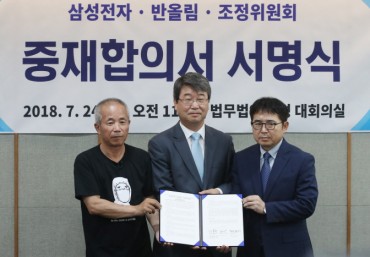SEOUL, July 15 (Korea Bizwire) — Can workplace bullies be punished?
It’s a tricky question in South Korea.
A revised labor law aimed at preventing workplace bullying went into effect here on July 16 last year. But the law came with a handful of prerequisites.
For one, it defines workplace harassment as “an act of incurring physical or mental suffering or a worsening of the work environment by employers or workers using their status or power to behave beyond the scope of working norms,” which many found to be too vague to enforce.
The law indicates that victims can report the case to their workplace — not the labor ministry — which is then mandated to launch an immediate probe into it.
The employer should take follow-up measures — such as changing workplace location or giving paid leave — and take punitive action against the bully when allegations are confirmed.
Employers can face up to three years in prison or a fine of up to 30 million won (US$24,863), if an employee is given any disadvantage — including getting fired — for reporting a case.
The legislation was seen as marking a step forward in a country where workplace bullying frequently makes headlines.
Among some drastic cases were Seo Ji-yoon, a nurse who took her own life after allegedly suffering bullying from her peers at a public general hospital.
On the other end of the spectrum, there was Yang Jin-ho, the head of a software firm, who cruelly killed a chicken at a company workshop and fired airsoft guns at employees.
But microaggressions are much more common.
A 2017 survey by the National Human Rights Commission (NHRC) showed that 73 percent of workers have suffered workplace bullying. It also showed that some 60 percent didn’t take any action on concerns it would affect their work life.
Then how much has changed after the symbolic legislation has gone into effect?
Not much, according to an online poll of 1,000 workers conducted by Prof. Lee Sang-hee of Korea Polytechnic University and commissioned by the labor ministry.
More than 70 percent of respondents said nothing has changed following the legislation, while only 19.8 percent said bullying has declined.
Separate data by advocacy group Gabjil 119, meanwhile, showed that workers tend to feel safer following the legislation but that it was not enough to assure victims to report the case.
Some 53.5 percent of the respondents felt that such violence has subsided following the legislation. At the same time, only 3 percent of around 45 percent who reported bullying said they reported the case to their employer or the labor ministry.
Most of the respondents who didn’t make a case said they felt things wouldn’t change or were afraid of malicious countermeasures.
“The law is meaningful in a sense that it can provide a roof to escape the rain. But that house needs to be better furnished and equipped to truly protect workers,” Park Jum-kyu, a committee member at Gabjil 119, told Yonhap News Agency.
Civic groups and organizations call for stronger measures to make the anti-bullying law more effective.
They point out how the current law puts more emphasis on building an anti-bullying work culture rather than taking punitive action against the perpetrators.

Nurses hold a rally in central Seoul on Feb. 16, 2019, to call for an end to the bullying culture over the death of a nurse who allegedly committed suicide over harassment at work. (Yonhap)
The current anti-bullying law, for example, only indicates how workplaces may face punishment, not how the bullies will actually be punished.
They also call for stronger measures at workplaces and an update in the law on expanding the scope of “bullies” to protect workers who are outsourced or temporarily hired.
Last week, the NHRC advised the labor ministry to include others outside of workplaces as “bullies,” expand preventive education at workplaces with four or less people and adopt punitive measures for the bullies in addition to the preventive measures.
It cited how the International Labor Organization’s “Violence and Harassment Convention” indicates that “an inclusive, integrated and gender-responsive approach” should also include those involving “third parties.”
This would help prevent harassment from family members and friends of a company’s chief who wield power while being “outsiders” or those coming from “non-employers,” such as verbal or physical abuse against concierges or cashiers by mean customers or residents.
But in the longer term, a change in work culture is critical to do away with workplace bullies, they said.
“Workplace bullying not only negatively affects the victim, but the organization as a whole,” said Kim Tae-ho, a researcher at the Korea Labor Institute, explaining that insufficient follow-up measures on bullying may prompt employees to doubt their employer.
The agenda should ultimately be building a work culture where employees feel respected, Park said.
“Not everything can be recognized as workplace bullying and not every case can be resolved through law,” he said, mentioning how the legal process typically requires accurate and detailed evidence of bullying.
“It’s a matter of changing a deep-rooted, top-down culture that has shaped itself over decades into one that respects workers. It will take time.”
(Yonhap)








